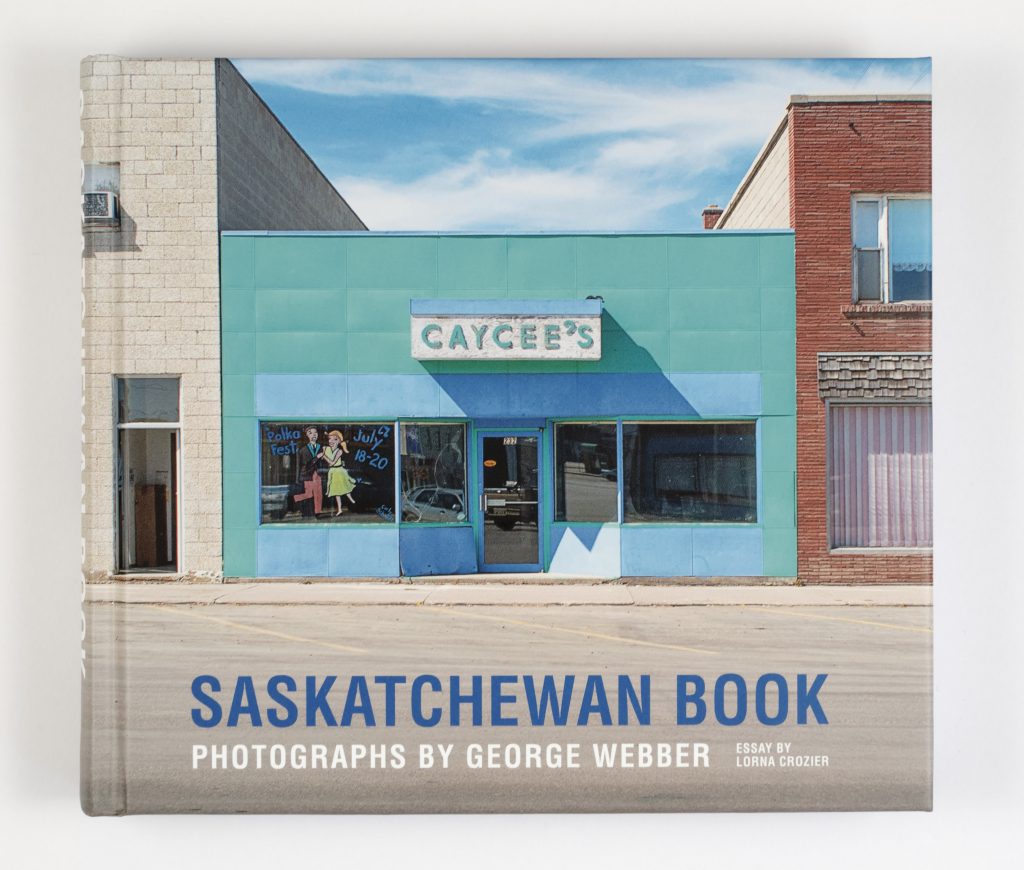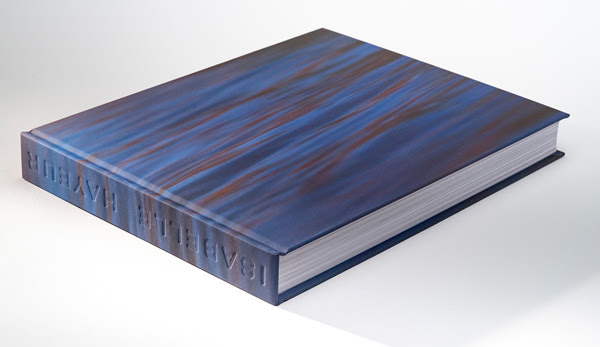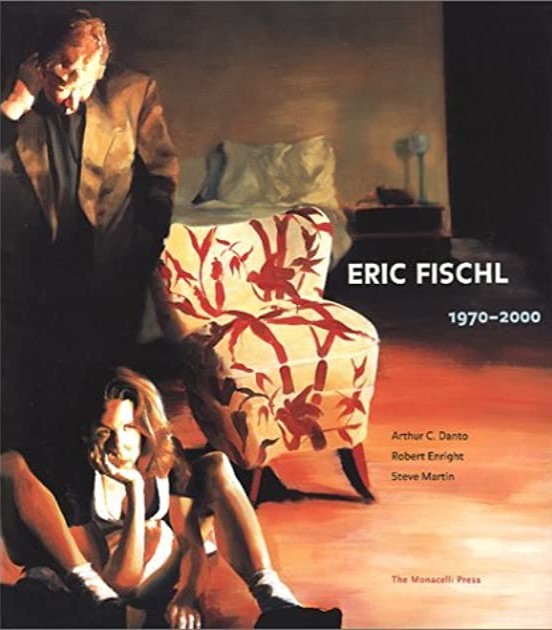In: Art library

The Polaroid Book : Selections from the Polaroid Collections of Photography
January 5, 2023The Polaroid Book : Selections from the Polaroid Collections of Photography
Edited by Steve Crist, Essay by Barbara Hitchcock
Taschen 2005

As a photographer, and especially as one who has shot a lot of instant film, I could wax poetic about the wonders of the Polaroid film process; that it was invented in 1947 by Edwin Land and his Polaroid Corporation; that he formed a partnership with Ansel Adams to explore the artistic capabilities of the medium in 1948; that Land and the Corporation made hundreds of cameras and film available to artists around the world on the condition that they gave some of their images to Polaroid’s collection of photos. I could tell you that it was THE photographic medium of the 50’s, 60’s, 70’s and 80’s and that creating a photo was indeed as easy as “Push, pull!”. However, there are so many writers and photographers out there who have extolled the virtues of the process over the last 75 years that I can’t possibly say anything new.
The Polaroid Book : Selections from the Polaroid Collections of Photography tells the story in 254 photographs by 203 artists. The photos include black and white documentary and landscape images taken with the cumbersome early models of the Polaroid line of cameras to incredibly immersive large format color images made by celebrated artists and fashion photographers. The creativity in these polaroids is boundless. From Adams to Warhol with a little Close and Hockney in between, Polaroids were a tool used by well (and lesser) known artists to create stunning pieces of work. Chuck Close’s Self-portrait (seen below) stands out; a mosaic made up of 9 separate images to create a large, somewhat disjointed selfie in Close’s trademark (and usually painted) style.
Perusing this book will lead you to want to try capturing this photo-magic yourself, which you can do by using Fujifilm’s Instax line of film and cameras. Anecdotal evidence points to these colourful, well designed cameras acting as lures to teens everywhere to further explore the possibility available to them in analog photography as a creative outlet. It is one of the reasons that film sales are quickly growing again after years of domination of the market by digital photography.
The Polaroid Book is available from numerous online and bricks-and-mortar retailers.
~ Mark Walton
Read More
Walker Evans – James R. Mellow
May 19, 2022Walker Evans
James R. Mellow
Basic Books; Revised ed. edition (Oct. 11 2001)
Walker Evans is one of the most famous American documentary photographers of the past 100 years and his images will stand for another hundred at least. While every serious photographer is familiar with his work (the best known of which was shot during the 1930’s for the U.S. Farm Security Administration as per the examples below), there have been relatively few books that discuss Evans as a man. James R. Mellow captures his complexities in this eminently readable biography, published in 2001.
What makes particularly interesting reading is Evan’s evolution as an artist, from failed student in the Mid-West US, to failed writer in Paris, to acclaimed photographer on his return to New York in the late 20’s and early 30’s. The book quotes extensively from his letters and other writings. One can almost hear him speaking… I imagine his voice to be a low pitched, slow drawl; a mix of Henry Fonda, Peter Coyote and Alan Rickman (minus the accent).
Evans comes across as dour and fatalistic, yet strangely still likeable. Much of his writing describes his unhappiness with things as they are, whether it be his annoyance with his mother, his dissatisfaction with the quality of the prints made from his negatives or his despondence about his romantic relationships. Many of his friendships with other famous artists are discussed, including Ben Shahn, Steven Crane and Hanns Skolle.
The book offers details about the trips Evans made to do his photography and specifically the trips he made with author James Agee as they worked on the seminal Let Us Now Praise Famous Men. Evans plays the role of aesthete opposite Agee’s sensualist, the collision of which resulted in a book acclaimed for its intimacy and realism… a strong documentary account of the lives of sharecroppers and their families in the American South during the Great Depression.
It is sad but somehow inevitable that Evans ends his days as somewhat of an alcoholic / academic recluse. Mellow’s reliance on Evans’ own words leave you feeling as if you really knew him, that you cared about him, but weren’t overly close to the actual man behind the photographs, because of his determination to keep people at bay.
Walker Evans by James R. Mellow is available from numerous online retailers.
~ Mark Walton
Read More
Saskatchewan Book: Photographs by George Webber
December 3, 2021Saskatchewan Book: Photographs by George Webber
Text by Lorna Crozier, Hardcover, 2020, 320 pages, $45.
Intentionally or not, the photographs George Webber made of rural Saskatchewan over the course of 30 years form a landscape typology. Beautifully portrayed in colour, his eye returns again and again to familiar prairie themes that invite comparison: faded signs, buildings in need of TLC (or more), and details of abandoned items left to decay. Although the particulars may change from scene to scene, there is an unavoidable thread that runs through the book: the wide-open skies of the prairies might go on forever, but traces of human settlement fade. You would not guess from Saskatchewan Book that the province has cities or that its population is growing. Instead, with every frame, Webber evokes memories of a way of life in a countryside eclipsed by urban living. It is an affectionate lament for the past.
Saskatchewan Book: Photographs by George Weber can be purchased here, at rmbooks.com.
Image + book review by Alan Bulley / @alanbulley
~ Rita Godlevskis
Read More
ISABELLE HAYEUR: Monograph
November 2, 2021ISABELLE HAYEUR: Monograph
By Mona Hakim, Peggy Gale, & Ann Thomas
Hardcover, 2020, 360 pages, available from Les éditions Plein sud
Texts in French and English $70 + Shipping
Committed to environmental causes since the 1990s, Isabelle Hayeur takes an acute critical look at the changes in our ecosystems caused by the devastating impacts of massive urbanization and industrialization on our territories.
This monograph, the most exhaustive publication to date on this artist’s work, leads us to the heart of her creative activity. Bringing together numerous visual documents, from her composite photo-graphs to portraits of citizen gatherings and activist groups by way of videos, installations in public spaces, and reflective texts, this richly illustrated book explores the vast production of an artist who has gained recognition in the contemporary art world, in Quebec and internationally. The texts present the reader with enlightened insights into the artist’s various accomplishments.
Read more about this monograph and order it here.
This recommendation appeared in the Fall 2021 – ECO ISSUE of PhotoED Magazine. If you’re looking for more Canadian photography inspiration check out PhotoED Magazine, in print + online https://www.photoed.ca
~ Rita Godlevskis
Read More
Annie Pootoogook | Life & Work
September 30, 2021Annie Pootoogook | Life & Work by Nancy G. Campbell
The Art Canada Institute has produced a number of fine books (all readily available at their site) on various artists that have informed and challenged the larger Canadian art world.
Nancy G. Campbell’s “Annie Pootoogook: Life & Work traces the artist’s life from her youth at the West Baffin Eskimo Co-operative’s Kinngait Studios, where she began drawing in 1997, predominantly in ink and crayon, to her death in 2016. The book explores how in addition to depicting scenes of everyday life in the North—including people watching TV, playing cards, shopping, or cooking dinner—Pootoogook depicted such subjects as alcoholism, domestic abuse, food scarcity, and the effects of intergenerational trauma.”
There is a certain bluntness and brutality, at times, to Pootoogook’s scenes. Campbell’s engaging but also rigorous examination of Pootoogook’s life and work (as they were, frankly, one and the same) explores how “the life of Annie Pootoogook (1969–2016) tells an important national story, and her career marks a pivotal shift in the national consciousness around contemporary Inuit art. With a keen eye for detail and fearlessness in representing daily life—the celebratory, the frightening, and the mundane—she captured the attention of Southern audiences. Although imported culture and technologies have dramatically changed Inuit life, the North has also stayed true to tradition: community, food, and language remain sources of Inuit pride. In her drawings, Annie depicted what is still valued and unique in her culture and what is changing rapidly. She had a meteoric rise in the art world that was tragically cut short when she died in 2016.”
I encountered Pootoogook’s work at the Mendel Art Gallery (now the Remai Modern) in Saskatoon in 2009. The simplicity and directness – the truth, both celebratory and unsettling – of her images resonated in that place. From the legacy of residential schools that dotted the prairies, to the Saskatoon police’s starlight tours, to the ongoing shameful dismissal of murdered and missing Indigenous women, Pootoogook – though from Cape Dorset – was very loud, in Saskatchewan, and even posthumously has a power to disrupt our assumptions and ignorance.
Annie Pootoogook: Life & Works, a publication from The Art Canada Institute, can be read here.
More about Pootoogook can be read here.
Read More

Forest for the Trees – Rita Leistner
September 16, 2021Rita Leistner
Forest for the Trees
Dewi Lewis Publishing
Rita Leistner’s latest, Forest for the Trees, is a feature documentary film and a book (published by Dewi Lewis UK), based on Rita’s fine art series The Tree Planters and Enchanted Forests, represented by the Stephen Bulger Gallery.
Rita is an award-winning multi-media artist and documentary filmmaker with a history of using photography and film to create portraits of communities in extreme conditions —such as soldiers in Iraq, female patients at psychiatric hospitals in wartime, and women wrestlers in the United States — exploring themes of purpose, struggle, and belonging.
Forest for the Trees is the story of the vast landscape of clear-cut logging and reforestation as experienced from a community of a hundred tree planters, tree planting by hand in remote locations in Canada.
Planting trees one at a time is the overarching metaphor of how we can achieve things we think are impossible: reforesting the earth one tree at a time, getting through life’s challenges one day at a time, and making a film one picture at a time.
www.forestforthetreesdocumentary.com
This recommendation appeared in the Fall 2021 – ECO ISSUE of PhotoED Magazine. If you’re looking for more Canadian photography inspiration check out PhotoED Magazine, in print + online https://www.photoed.ca
~ Rita Godlevskis
Read More
Eric Fischl 1970 – 2000
August 25, 2021Eric Fischl 1970 – 2000 (2008)
Fischl is a complicated, sometimes brilliant, sometimes less so, painter. In offering Eric Fischl 1970 – 2000, I feel that it has to be enjoyed in tandem with his biography Bad Boy : My Life On and Off the Canvas, which is unflinchingly honest about his life and his work. As you peruse the many fine images of his work in this book, I enjoyed the writings of Arthur C. Danto, was less impressed with Robert Enright or Steve Martin, but found myself more so considering Fischl’s own words: “Old-school curators and historians who attempted to predict the zeitgeist failed spectacularly. They underestimated or completely misunderstood our generation’s embrace of irony, nihilism, and the absurd sincerity of the insincere gesture….None of us knew what work would enter the lexicon, what would last. No one really knew if any of it was any good. All we knew was that we were the next generation.”
Fischl, in many ways, is one of the few American painters that were ‘stars’ of the 1980s whose work hasn’t lost some of its appeal over the nearly four decades since that unique and complicated era. From Eric Fischl 1970 – 2000: “Eric Fischl emerged in the 1980s as one of America’s most important figurative painters. His paintings, many of which show a single intense moment, compel the viewer to participate in a world of middle-class suburban ambiguity and drama. In Fischl’s engaging distinctly American canvases, narrative, morality, sexuality, and psychology are preeminent.”
The book can be purchased here, but if you’re like me and lucky enough to have an excellent library nearby – and would prefer to eschew those lumbering e-commerce monstrosities – then that is what I’d suggest (there are also many smaller, independent book stores that would be happy to order it for you, too). Fischl’s images require attention to detail and repeated considerations, and this book offers both that and some interesting, contrasting voices, as well.
Read More
Recent Comments